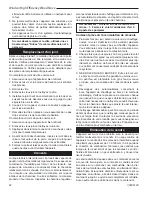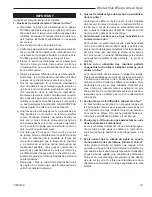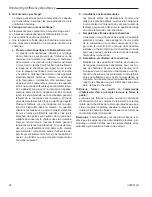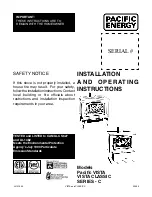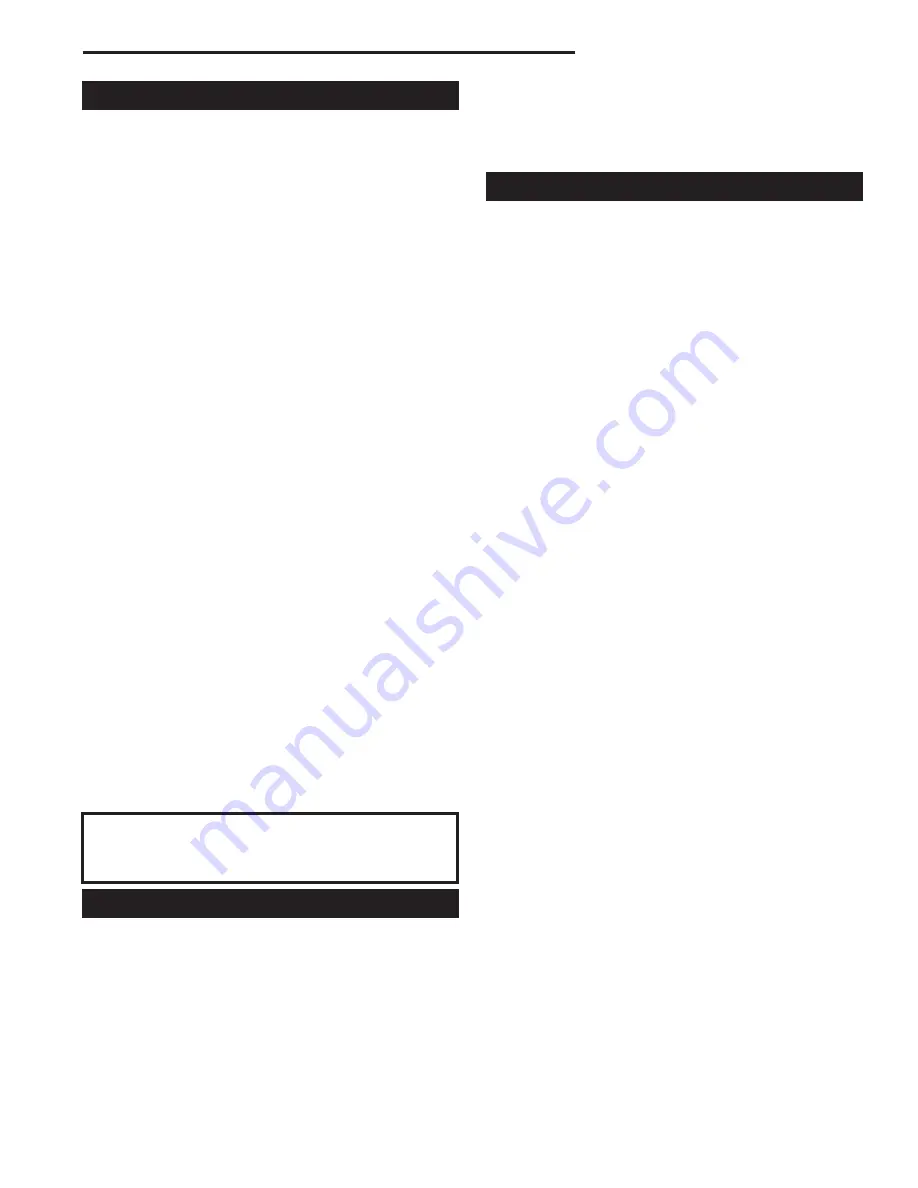
9
Windsor High Efficiency Wood Stove
30005128
Creosote
When wood is burned slowly, it produces tar and other
organic vapors. These combine with moisture to form
creosote. Creosote vapors condense in the relatively cool
chimney flue of a slow-burning fire. As a result, creosote
residue accumulates on the flue lining. When ignited,
this creosote makes an extremely hot fire. The chimney
should be inspected regularly during the heating season
to determine if a creosote build-up has accumulated. If
this is the case, the creosote should be removed to re-
duce the risk of chimney fire.
Ways to Prevent and Keep Unit free of Creo-
sote
1. Burn with air control open for several minutes at nu-
merous intervals throughout the day during the heat-
ing season, being careful not to over-fire unit. This re-
moves the slight film of creosote accumulated during
low burn periods.
2. Burn stove with draft control wide open for several
minutes every time you apply fresh wood. This allows
wood to achieve the charcoal stage faster and burns
wood vapors which might otherwise be deposited with-
in the system.
3. Burn only seasoned wood. Avoid burning wet or green
wood. Seasoned wood has been dried for at least one
year.
4. A small hot fire is preferable to a large smouldering
one that can deposit creosote within the system.
5. Establish a routine for the fuel, wood burner and fir-
ing technique. Check daily for creosote build-up until
experience shows how often you need to clean to be
safe. Be aware that the hotter the fire, the less creo-
sote is deposited. Weekly cleaning may be necessary
in mild weather even though monthly cleaning may
be enough in the coldest months. Contact your local
municipal authority for information on how to handle a
chimney fire. Have a clearly understood plan to handle
a chimney fire.
WARNiNG: things to remember in case of chimney
fire: 1. Close draft control. 2. Call the fire depart-
ment.
Ash Disposal
This unit features a convenient ash lip for easy removal
of ash. During constant use, ashes should be removed
every few days, or whenever ashes get to three to four
inches deep in the firebox. Remove ashes only when the
fire has died down and the ashes have cooled. Even then,
expect to find a few hot embers.
Ashes should be placed in a metal container with a tight-
fitting lid. The closed container of ashes should be placed
on a noncombustible floor, well away from all combus-
iMPoRtANt
Helpful Hints
1. What is the correct way to start a fire?
a. You will need small pieces of dry wood (kindling)
and paper. Use only newspaper or paper that has
not been coated or had unknown materials glued or
applied to it. Never use coated (typically advertising
flyers) or colored paper.
b. Open the door of the wood stove.
c. Crumple several pieces of paper and place them
in the center of the firebox and directly on to the
firebricks of the wood stove. Never use a grate to
elevate the fire.
d. Place small pieces of dry wood kindling) over the
paper in a teepee manner. This allows for good air
circulation, which is critical for good combustion.
e. Light the crumpled paper in 2 or 3 locations:
NotE:
It is important to heat the air in the stovepipe for
draft to start.
f. Fully open the air control of the wood stove and
close the door until it is slightly open, allowing for
much needed air to be introduced into the fire box.
Never leave the door fully open as sparks from the
kindling may occur causing injury or property dam-
age. As the fire begins to burn the kindling, some
additional kindling may be needed to sustain the
fire.
Do Not
add more paper after the fire has
started.
g. Once the kindling has started to burn, add some
of the smaller pieces of seasoned (dry) firewood.
NotE:
Adding large pieces at the early stages
will only serve to smother the fire. Continue add-
ing small pieces of seasoned (dry) firewood, keep-
ing the door slightly open until each piece starts to
ignite. Remember to always open the door slowly
when placing wood into the fire.
h. Once the wood has started to ignite and the smoke
has reduced, close the wood stove door fully. The
reduction of smoke is a good indication that the draft
in the chimney has started and good combustion is
now possible. Larger pieces of seasoned (dry) fire-
wood can now be added when there is sufficient
space in the firebox. Adjust the air control setting to
desired setting.
i.
NotE:
The lower the air control setting the longer
the burn time of your firewood.
tible materials, pending final disposal. If the ashes are dis-
posed of by burial in soil or otherwise locally dispersed,
they should be retained in the closed container until all
cinders have thoroughly cooled. Other waste should not
be placed in the ash can.






















